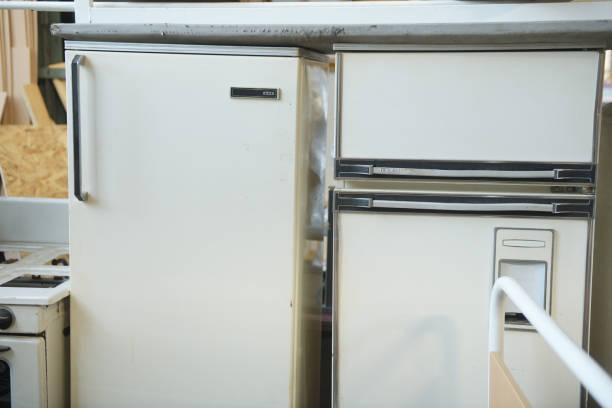
Refrigeration issues can be frustrating and disruptive, whether dealing with a malfunctioning refrigerator at home or a commercial refrigeration system in a business setting. Understanding how to identify and resolve refrigeration problems is essential for maintaining your refrigeration equipment’s efficiency, reliability, and longevity. In this comprehensive guide, we’ll explore common refrigeration issues, their causes, and practical steps you can take to diagnose and resolve them effectively.
Common Refrigeration Problems:
Temperature fluctuations: Inconsistent temperatures inside the refrigerator or freezer can lead to food spoilage and compromised product quality.
Excessive frost buildup: Frost accumulation on the evaporator coils or inside the freezer can restrict airflow and hinder cooling.
Noisy operation: Unusual noises such as buzzing, humming, or rattling may indicate mechanical issues or malfunctioning components.
Leaking refrigerant: Refrigerant leaks can cause a loss of cooling capacity, resulting in warmer temperatures and increased energy consumption.
Compressor failure: The compressor is the heart of the refrigeration system, and failure can lead to a complete breakdown of cooling functions.
Identifying Refrigeration Issues:
Temperature monitoring: Use a thermometer to monitor the temperature inside the refrigerator or freezer and identify any fluctuations or inconsistencies.
Visual inspection: Check for signs of frost buildup, water leakage, unusual noises, or visible damage to components such as gaskets, seals, and condenser coils.
Listen for abnormalities: Pay attention to any unusual sounds emanating from the refrigeration unit, such as clicking, buzzing, or knocking, which may indicate mechanical issues.
Check compressor operation: Listen for the sound of the compressor cycling on and off and feel for vibrations to ensure it is functioning correctly.
Common Causes of Refrigeration Issues:
Poor airflow: Blocked vents, dirty condenser coils, or a malfunctioning evaporator fan can disrupt airflow and lead to temperature fluctuations or frost buildup.
Refrigerant leaks: Leaks in the refrigeration system can result from damaged components, corrosion, or improper installation, leading to a loss of cooling capacity and efficiency.
Faulty components: Malfunctioning components such as thermostats, defrost timers, or compressor relays can disrupt the refrigeration cycle and cause temperature fluctuations or compressor failure.
Overloading: Overloading the refrigerator or freezer with less food can restrict airflow and hinder the unit’s ability to maintain consistent temperatures.
Diagnosing and Resolving Refrigeration Problems:
Clean condenser coils: Dirty condenser coils can impede airflow and reduce cooling efficiency. Regularly clean the coils with a coil brush or vacuum to remove dust and debris.
Check door seals: Inspect the door seals for signs of wear, damage, or gaps that may allow warm air to enter the unit. Replace worn or damaged seals to ensure a tight seal.
Defrost the unit: Excessive frost buildup inside the freezer or on the evaporator coils can be resolved by manually defrosting the unit or checking and replacing faulty defrost components.
Test compressor operation: Verify that the compressor receives power and cycles on and off as needed. If the compressor fails to start or makes unusual noises, it may need to be replaced.
When to Seek Professional Help:
If you cannot diagnose or resolve the issue on your own, or if the problem persists despite your efforts, it may be time to call a professional refrigeration technician.
Professional technicians have the expertise, experience, and specialized tools to diagnose and repair complex refrigeration issues safely and effectively.
Prompt, professional intervention can prevent further damage to the refrigeration system and minimize downtime, ensuring that your equipment remains operational and reliable.
Conclusion:
Identifying and resolving refrigeration issues requires a systematic approach, careful observation, and understanding common problems and their causes. By following the steps outlined in this guide, you can diagnose and resolve refrigeration issues effectively, ensuring your refrigeration equipment’s continued efficiency, reliability, and longevity. Whether you’re troubleshooting a home refrigerator or a commercial refrigeration system, taking proactive steps to address problems will help minimize downtime, prevent costly repairs, and ensure optimal performance.